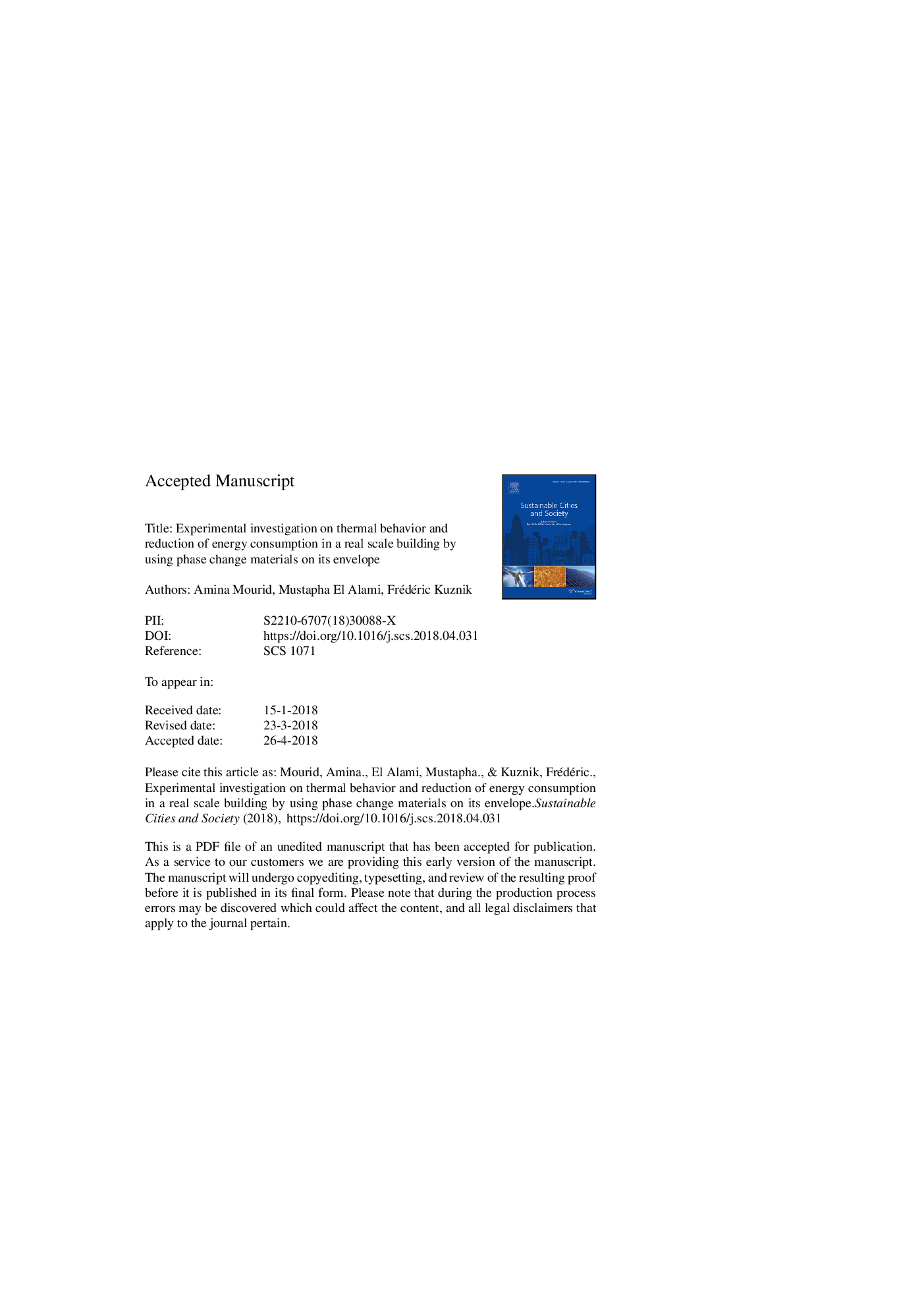| Article ID | Journal | Published Year | Pages | File Type |
|---|---|---|---|---|
| 6774846 | Sustainable Cities and Society | 2018 | 31 Pages |
Abstract
The study aims at analyzing the performance of phase change material (PCM) in two residential rooms within heating periods. This paper presents the results of experiments performed in the Faculty of Science Aïn Chock, Casablanca. The in-situ cells are identical with dimension of 3â¯mâ¯Ãâ¯3â¯mâ¯Ãâ¯3â¯m. The walls are made with double layer of alveolar brick (72â¯mm) separated by an air layer (126â¯mm). The internal faces of one of these cavities are embedded with a PCM layer (5.3â¯mm). The tested PCM is Energain® wallboard manufactured by DuPontâ¢. The cavities are heated by oil radiators which delivered the same energy power. Measures focus on ambient temperatures, wall temperatures and instantaneous heat flux densities through the walls. Also, the effect of phase change material on energy consumption was investigated. The results, related to two periods (January 25th to 27th, 2015 and April 1st to 3rd, 2015), show that the inclusion of the PCM to a standard wall leads to a temperature increase about 6â¯Â°C during the night and increases strongly the apparent thermal mass of the room, which allows a reduction in heat fluxes. Finally, the heating energy savings resulting from PCM application can reach up to 20%.
Related Topics
Physical Sciences and Engineering
Energy
Renewable Energy, Sustainability and the Environment
Authors
Amina Mourid, Mustapha El Alami, Frédéric Kuznik,
